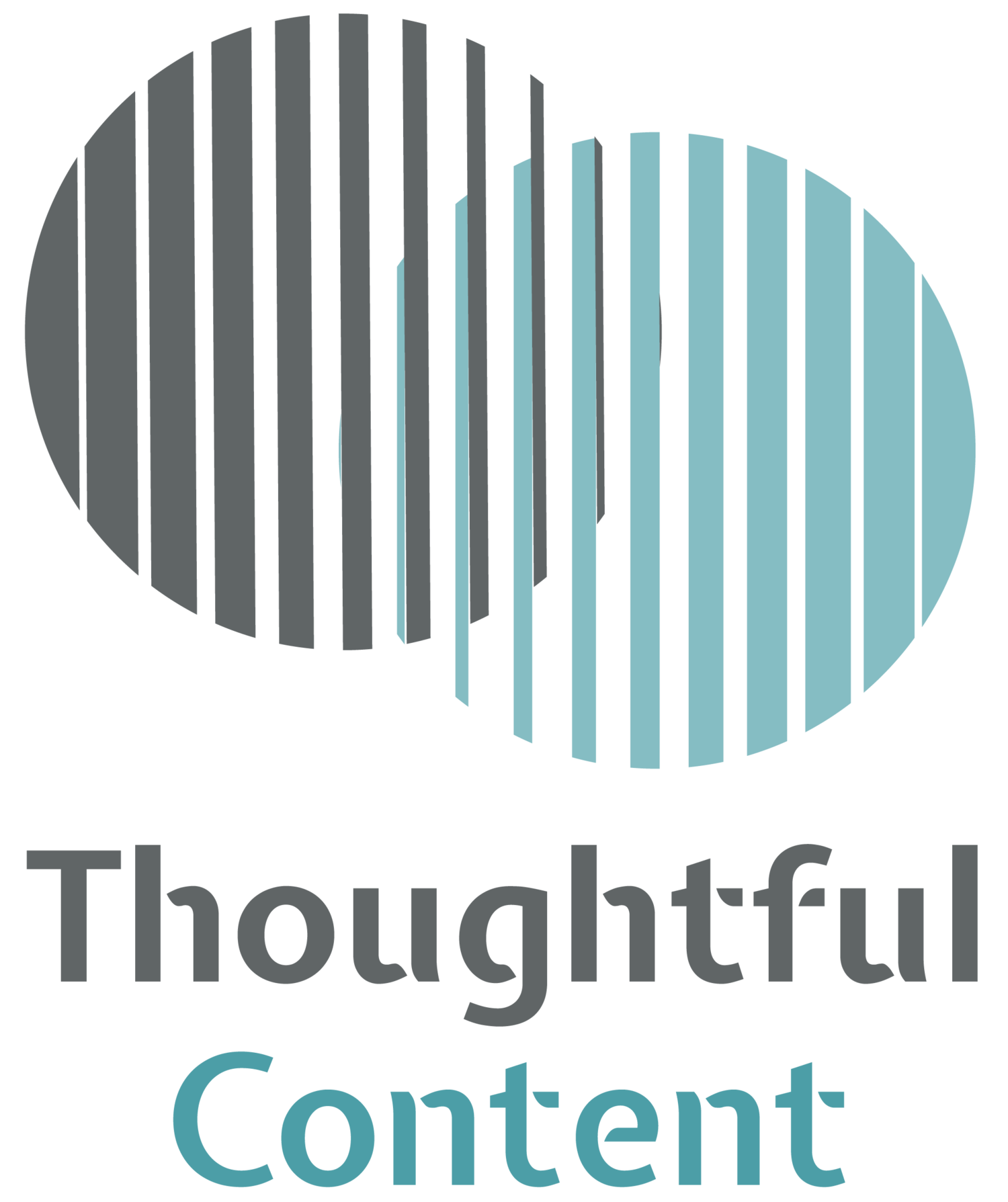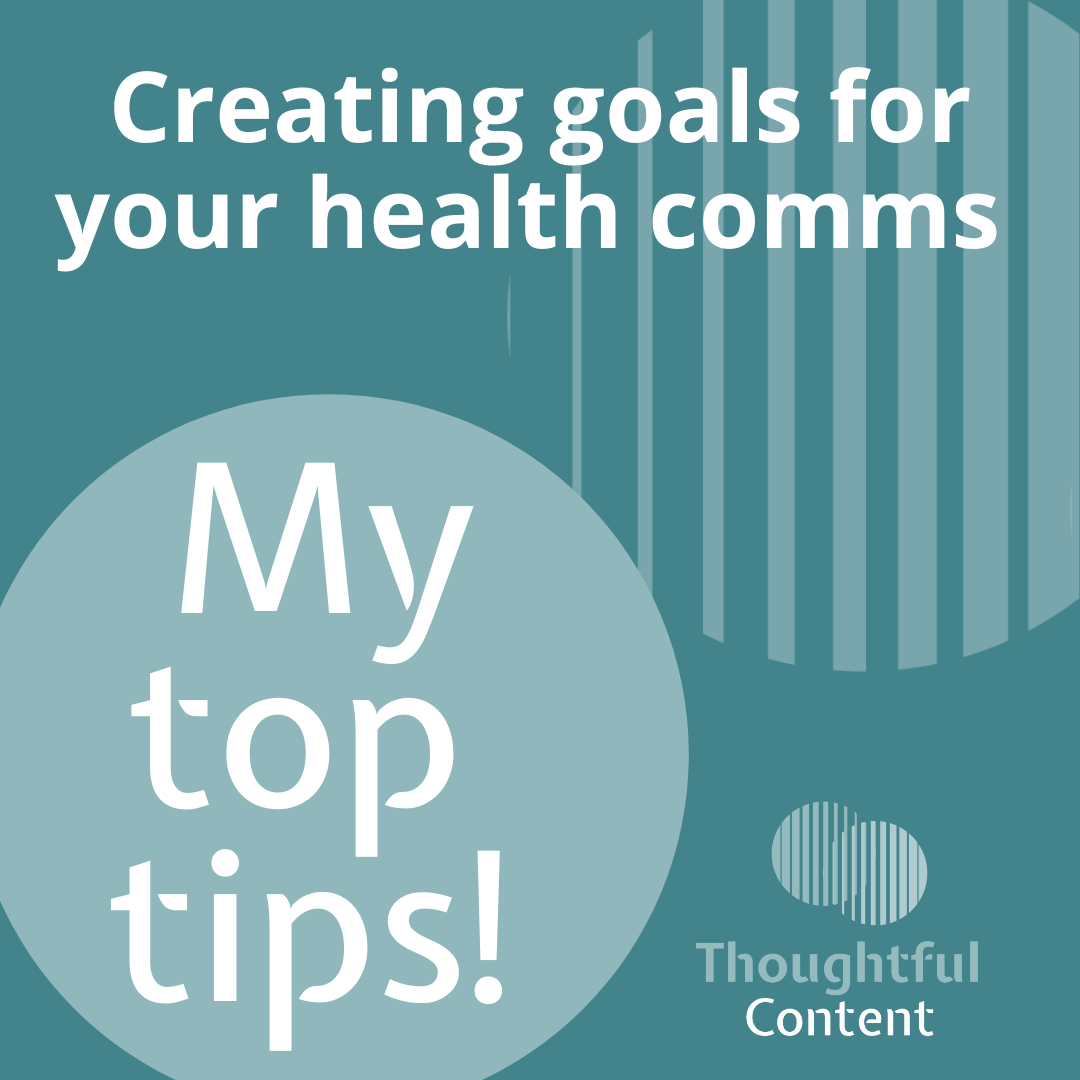Creating goals for your health comms
Image that reads: creating goals for your health comms. My top tips!
Health comms without a purpose can feel pointless. You might have read a leaflet or website where it feels like they are just telling you something for the sake of it. Maybe the writer knows a lot of stuff about a medical condition or a treatment and they just feel like writing about it. Or they’ve got some budget to spend and they know writing a blog or producing a fact sheet is a good thing to do. There may be regulatory reasons that mean information has to be produced, but clear goals have not been thought through as part of the process.
But when you are on the receiving end of this type of goal-less content, it can feel like hard work. It’s likely you might not get to the end of reading it. Even if you do read it all, it is unlikely to have any impact on you or your life.
How can you avoid this? Before you write anything, think about your key messages and brainstorm your goals with key stakeholders. It is vital that this is informed by audience research. Read my other blog about that. If you feel stuck, talk it through with a critical friend
What are your key messages?
If you had to write it on a post-it note, what 3 things are you trying to say? The next thing to do is to front load these messages at the beginning of your content! And then repeat them again at the end.
What do you want the reader to know after seeing this work?
Perhaps you want them to know more about a particular health problem, treatment or behaviour. Try and get into the specifics: what do you really want them to know about that? What medicine to take, how to take it, what support might help, where to get support? Working this out can also help structure your content.
What do you want the reader to feel after seeing this work?
As well as gaining knowledge, you probably want your audience to feel something. A lot of health content aims to make people feel more confident or reassured. Self-efficacy is a big thing in health behaviour change: it means ‘the confidence a person has about their capacity to undertake behaviour(s) that may lead to desired outcomes.’ So that is definitely worth exploring.
Thinking about the emotional impact of the content can also make you create more engaging content. Bear in mind, some health information can leave readers feeling overwhelmed, considering this can help you factor in ways to mitigate this. For example, thinking about layout and design. Creating summaries and using different formats may help.
What do you want the reader to do after they have seen it?
This is the crux of it. Historically, health information was very passive, there was nothing for the reader to act on. Health information can have an educational purpose of course, but making it interactive or having actions as outcomes means it is more likely to make a real difference. Thinking about what actions you want your audience to take is vital. You can then use behaviour-change or behavioural insight approaches to explore how to make these happen.
A quick recap: plan your key messages and think about what you want your audience to know, feel and do. If you take the time to do this before you start researching and writing the process will be much smoother.
Having a good briefing form that covers all this and more is a good way to embed this in your working practices. For more on this, watch this space for news of the Thoughtful Content training course, out in January! Let me know what else you would like to cover: get in touch.

